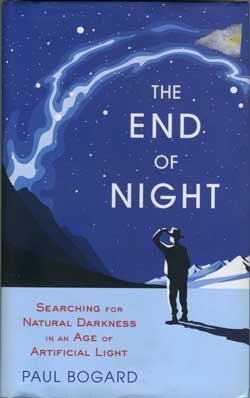Turn out the light
Note: This essay was first published in Paleo Magazine
In the night, every cat is a leopard.
Italian proverb
We can only imagine the night on the African grassland, a million years ago. With no light pollution to obscure the sky above, we had a perfectly clear view deep into the heart of the cosmos. With the exception of occasional dust storms or cloud cover, there was nothing to obscure our raw experience of stars, galaxies and the immensity of our universe.
But our experience of night was much more than just a celestial light show. Dangers lurked in the shadows and hungry predators made the rounds; early hominids were just as edible as any other primate after all. Were we afraid? It’s hard to say. Fear doesn’t fossilize, but it’s safe to assume that we were wary and vigilant; our ancestors were no fools. We were naked, but we had knowledge, skills and tribe mates to help protect us. Our bodies were finely tuned to the circadian oscillations of our habitat. Hormones and other informational substances coursed through our bodies at the right times and in the right amounts. We slept when it was safe to sleep, but when danger crept into camp on the wind, we opened our eyes and did what needed to be done.
We were highly adapted to the oscillations of light and darkness, but our mastery of fire changed everything. Suddenly, we could keep the darkness and the danger at bay. Not only did the fire cook our food and scare off predators, it also gave us the means to stay up late, sweeping our gaze from burning coals below to the broad sweep of galaxies above. This was the spark of the human imagination. With fire, we asked big questions, struck with wonder at our most implausible and fragile circumstance, poised between heaven and earth. Hungry for explanation, we began to tell stories, launching ourselves into a positive feedback spiral of imagination and narrative that gave birth to human culture.
Sadly, this early experience was later eclipsed by the advent of agriculture and most especially, our habitation of cities. Suddenly, night was dangerous in a new way, a way that our bodies and minds were utterly unprepared for. New cities, especially in the Middle Ages, were filled with human hazards, a point vividly documented by A. Roger Ekirch in At Day’s Close: Night in Times Past. Open ditches and sewers, makeshift buildings, open fires and marauding gangs of criminals were a constant threat, especially in Medieval Europe. For many people, the night became at time for “shutting in,” a time to bar the doors and windows for protection. Darkness was a time to be afraid. The night sky became a distant memory.
Steeped in this danger and gloom, the human imagination created dark new stories of demons, boogey men, monsters, witches, trolls, pixies, ghosts, vampires, werewolves, banshees and other terrors. We huddled in the darkness, longing for the light, every night a very real Halloween.
The long darkness traumatized us, but our suffering eventually began to abate with the advent of oil lamps and most significantly, electric lighting. Cheap and efficient artificial light banished many of the demons from our imagination and cleared the way for the aptly-named Enlightenment and in turn the rise of scientific, secular culture. The light brought us wealth, new discoveries and a new sense of confidence.
But the upside of artificial light also carried a catastrophic downside. By banishing the darkness from our homes, our streets and our neighborhoods, we have profoundly altered the most fundamental rhythm of human and animal life. We have created a alien circadian environment, one that challenges our brains and bodies in profoundly destructive ways. In effect, we are conducting a radical, unprecedented experiment on the human organism, interfering with our physiology at the most basic, cellular level. If some alien power were to impose such an action on us without our consent, we would presumably resist it with all our available resources. Instead, we are doing it to ourselves.
The consequences of this circadian monkey business are manifold, but the most obvious is today’s epidemic of insomnia. The irrational fears of the Middle Ages have been displaced, only to reappear in the form of widespread, chronic sleep disorders and the anxiety that goes with them. Sleep, the most essential rejuvenating phase of animal experience, is under assault and the consequences are severe: impaired memory and learning, increased impulsiveness, poor judgment, decreased creativity, weight gain, suppressed immunity and increased stress.
Even worse, our imagination is also suffering. As artificial illumination destroys the last shreds of darkness and our view of the night sky, it also extinguishes the sense of wonder that animated our lives in the ancient past. No longer do we gaze into the heavens in awe; no longer do we ask the big questions that come with such a view. Instead, we scroll, click and tap until the small hours, then lie awake in turmoil, desperate for sleep, desperate for rest and peace. We are tortured by our own innovations.
Perhaps it’s time to get out of the light and back into the dark. What we need is a new endarkenment. The time has come to limit our compulsive reliance on artificial light, to extinguish the constant illumination of every public and private space, to let the turning of the earth be as it is.
So give the darkness a chance. Embrace your rhythmic, circadian nature.
Not only will we sleep better and find relief from stress, we’ll also find our way back to wonder, awe and the mystery of this beautiful adventure.
Note: Be sure to see Paul Bogard's new book, The End of Night
